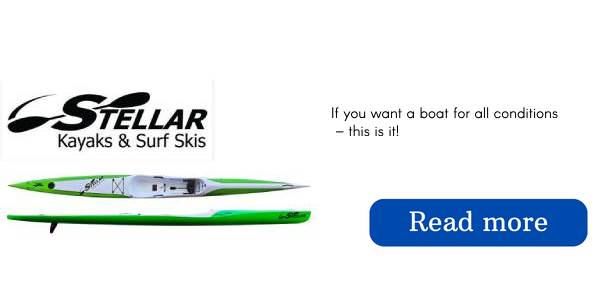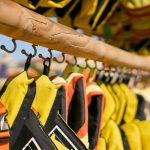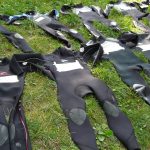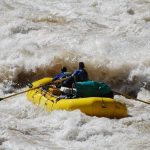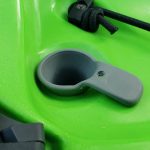Navigating by the wind is an expensive yet slow method of travel. The satisfaction of doing something is greatly decreased when hindered by poor visibility.
Navigating through fog, night, or any other conditions that limit visibility can bring a lot of risks, ranging from trouble with navigation, other vessels, and even the wind.
you are so dependent on your eyesight when sailing a sailboat that when that sense is reduced, trying to navigate in a certain direction turns into a desperate attempt to survive.
It can be dangerous for a boat that is travelling on the open sea if visibility is not clear. All maritime nations throughout history have formed an international agreement that every captain has to be able to see in every direction while steering their vessel.
If you find yourself unable to observe your surroundings while sailing, your circumstances automatically become precarious. Since being enveloped in fog and darkness inherently brings peril, the experience can be daunting. But sailing in fog particularly sucks.
Visibility is greatly decreased in the dark, when it is raining, and when there is fog, making it very dangerous for sailors.
Combining any of the above-mentioned conditions with the defining characteristics of a sailboat (for example, lower agility, integrated components under the waterline like the rudder, keel and propeller, and the sound money being squandered away) makes the idea of taking a boat out on the water with poor visibility a very undesirable thought.
Fog Affects Visibility
Fog is different from mere darkness or precipitation. The use of helping devices such as GPS and radar can alleviate the effects of darkness.
Navigating across the night sky while it can cause a degree of apprehension, can also be a charming occasion for the ready boatman. When night time arrives, the sea can become incredibly still, transforming the water into a glass-like sheet.
On such evenings, a sailboat has the potential to gently glide through the night sky, providing a momentary refuge away from the hustle and bustle of life.
Once the sun begins to set, there is a sense of relief as the oppressive heat of the day dissipates. The wind and its signals rarely completely vanish in moments of darkness or rain. But in fog, the wind becomes an enigma.
The fact that you cannot view the swell or beacons and often times, cannot even make out your windex located on the top of your mast, means that you are completely reliant on felt wind.
You cannot tell which direction the wind is coming from when it is foggy.
Real wind is the wind as seen from a divine perspective – the wind just as nature intended it to be.
Apparent wind is a figment of your imagination. The breeze you sense results from your boat’s momentum, as observed by someone out at sea.
At times, when the fog rolls in the wind completely stops and your vessel is simply left adrift, relying on the flow of the current.
Fog Affects Sound
The fog isn’t just tricking us with the wind. Noise is transformed into weird creatures when your view is taken away from analyzing the sailing process.
In foggy conditions, noises are reflected off of droplets of water in the atmosphere and amplified due to the silence, which can make the sound of a boat motor five miles away sound like it is five feet away to a listener who is unable to see.
The sound of water crashing against a pile of stones looks like a powerful tsunami when the distressing and hushed ambience of fog surrounds it.
The sensation of fear that creeps up ones spine is amplified by the sound of a surprise gong, horn, or most alarming of all, a bell in a thick mist.
Sometimes the bell buoy is a safe point of reference for sailors, or maybe a large cargo vessel resting at its mooring. It’s unfortunate that such an occurrence is unexpected, but if you hear the sound of a gong you are likely facing a difficult situation.
If you hear a horn, it can make you anxious because you don’t know if it’s coming from a boat that’s moving, lying still, fishing, or sailing.
It’s important that one should be familiar with the various fog signals, however not many people have this knowledge nowadays. It is known that there is another vessel or ATON in the vicinity, and you may be at risk of running into it.
The most unpleasant sound one can hear in a fog is the ringing of a bell. The pattern of ringing was three quick chimes, followed by a longer one, and then another three quickly.
If you hear a fog signal nearby, it’s time to worry because another boat is close by that was using the appropriate horn, but apparently made a mistake and ran aground, and the same could happen to you.
Navigating in the Fog
No matter what warnings may be given regarding the hazards of navigating through fog while operating with a rigid agenda, captains will still take their boats out into dense fog disregarding common sense.
One’s schedule unavoidably compels one to take a journey through the drab and dreary terrains. Many people may promise to never again make the same mistake, but they inevitably repeat their mistake, so I won’t provide my opinion about not leaving if the visibility is under 1/4 mile.
Hear No Evil
The sound of crashing waves, engines from boats, barking dogs and chirping birds can be just as essential when sailing in foggy conditions as the sounds made by navigational instruments such as bells, gongs, and whistles.
Sometimes they are more important. In foggy conditions, listening is usually much more advantageous than seeing.
The primary guideline to follow is that you should only utilize your engine as a final option. It’s similar to when blinding headlights are on a dark street after dark, your motor detracts from your hearing both as it’s running and for a few minutes after you’ve turned it off.
Even if you station someone at the front of the vessel, distant from the motor, the noise it creates can make it difficult to distinguish the initial noises of an oncoming powerboat, the sound of waves crashing, or other crucial components of the acoustic environment.
Employ your sails as the primary means of propulsion; reserve the use of the motor only for periods of no wind. Turn off the motor regularly and take time to hear what is happening in your environment.
Be mindful that some sailing maneuvers are better suited for detecting potential threats than others. Taking a voyage upwind while in a fog is usually safer than sailing downwind. When sailing against the wind, noises are brought towards you.
However, when sailing in the same direction, the sound is taken away. A light breeze will not transmit sounds as far as a moderate breeze would.
The density of the fog can influence how far away something can be heard. When visibility is decreased to 100 feet or lower, only the loudest foghorns are beneficial and their whereabouts can be tricky to identify due to the echoes created by fog patches of differing density.
Sounds may disappear and reappear. You should not expect to hear an audible guidance prompt as you draw near to it.
The Plots Thicken
When visibility is extremely limited, it is advisable not to maneuver towards a port that has a tight opening or many ships. It is unorthodox to have harbors such as this away from Maine, however towards the east of Casco Bay, you can easily locate inlets that are a mile wide and lead to harbors that seldom receive visits from recreational boats.
Thanks to the reasonable prices of GPS devices, it is now much simpler to stay away from traffic. Prior to utilizing GPS technology, captains usually followed the same routes to buoys, meaning there was an increased danger of crashes occurring.
Nowadays you can establish your own navigation markers and avoid popular routes and buoys. It may be a bit more time consuming, but you will be rewarded with a safer, less congested route.
Plotting a course to the side of an island that is away from the wind direction often works to advantage, as the heat of the land will dissipate the fog, and may help increase the steady summer breeze.
Classes that bring you a considerable distance inland are also advantageous, since the air in those areas will heat up faster and thin out the fog sooner. The upper parts of many rivers tend to be ideal for sailing, while an unfavorable experience awaits those who continue on to lower stretches of the same river.
Loud and Proud
The most effective way to prevent accidents in foggy conditions is to create sound. It is essential to always have a loud and effective signaling horn on your person, and to also understand how to use it.
Even if you aren’t normally required to sound a fog signal every two minutes while your boat is in motion (one long blast for power boats; one long, followed by two short ones for sailboats), you should still plan on doing so when other vessels are nearby.
If you can hear a boat nearby in thick fog, and you think that you might be about to crash into it, then you should sound five short blasts on the horn as a sign of warning. I have discovered that somewhat longer blasts than the one-second definition are much more efficient.
Radar is a great way to help dodge collisions, however, it is worth bearing in mind that not all boats will be visible on your radar. Fiberglass sailboats, kayaks and small skiffs can be difficult to spot and kayaking is becoming more popular in the areas I sail through.
An alternate helpful approach to create more commotion is to operate your VHF radio. Call in regularly on frequency 16 providing information on where you are, the path you are on, how fast you are going and your expected destination.
When visibility is extremely limited, it is crucial to reduce your speed. Taking it slow is the most sensible way to maneuver through the fog. In the past 35 years that I have been sailing along the coast of Maine, I have adhered to the suggestions provided here, thus avoiding any collisions.
What kind of Fog?
Meteorologists recognize fourdistinct types of fog. Understanding what kind of situation you are dealing with can help you handle it better.
Advection fog
This phenomenon, commonly referred to as sea fog, is the most widespread type. A fog occurs when a warm and humid breeze blows over a frigid body of water. The cold temperature induces the water vapor to condense and create small water droplets that hang in the air.
Frequent fog can be observed during the summer months, especially in the evening and in the early hours of the day. When there is little wind, the air is at its densest, but as the sunlight increases and winds gust, it will become less dense.
Radiation fog
This type of fog typically appears in the evening and the morning when the atmosphere is still and there are no clouds. Under these circumstances, the air near the ground becomes colder faster than the air higher up.
If the temperature drops sufficiently, the humidity in the atmosphere will turn into a fog. Radiation fog doesn’t usually last long. The heat of the morning sun and/or a wind blowing at a speed of more than 5 knots usually clears it away by mid-morning.
Precipitation fog
This type of weather phenomenon, also recognized as “rain fog,” occurs when precipitation from warmer layers of the atmosphere falls through colder air close to the surface of the water. The water vapor from the rain that is falling down changes into condensation and creates fog.
The incidence of it happening is not limited to a particular season and may arise when the directions of the winds range from southwest to east. Once the rain has ended, the fog tends to dissipate, especially if there’s wind present.
